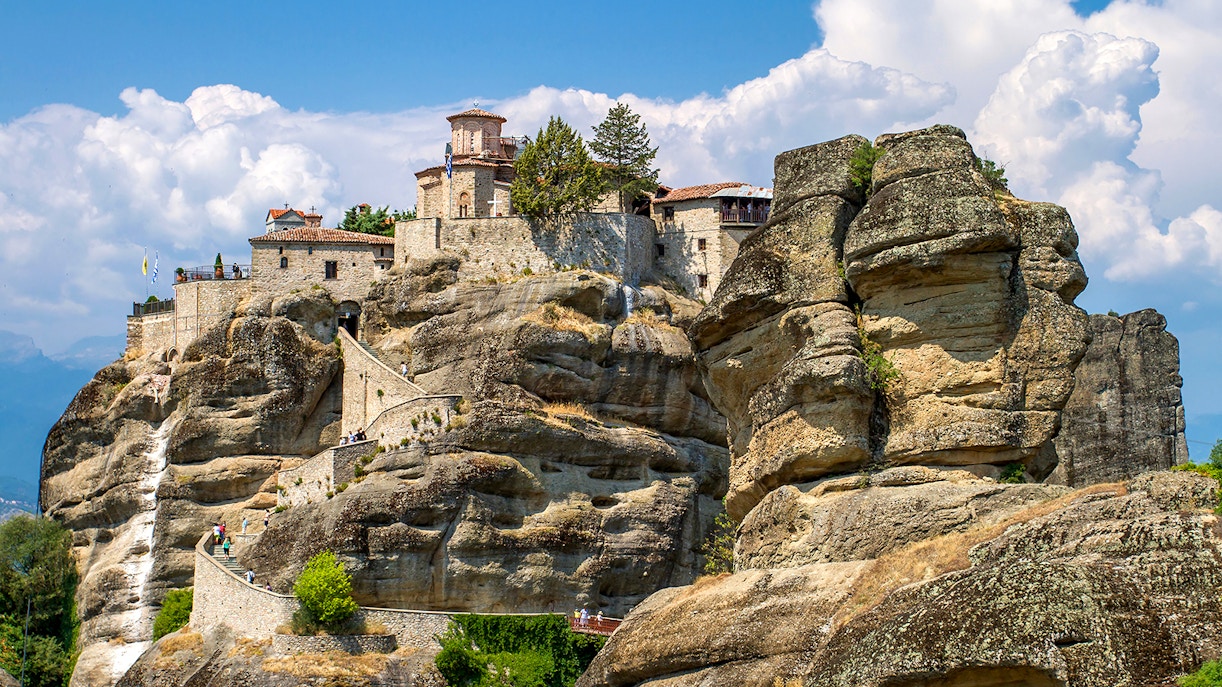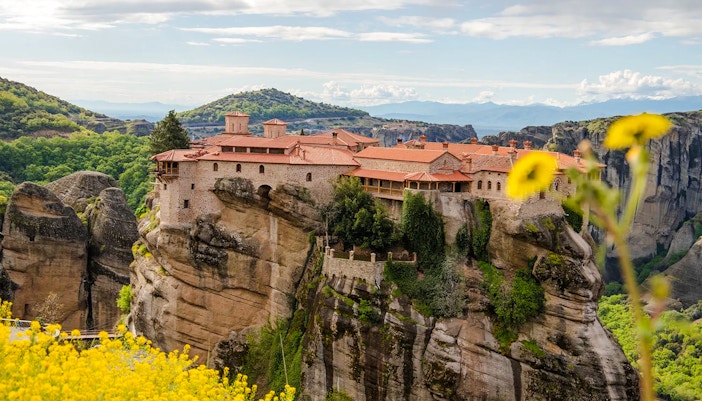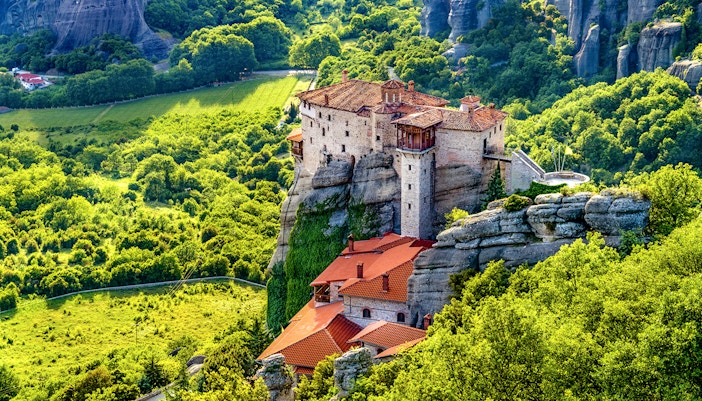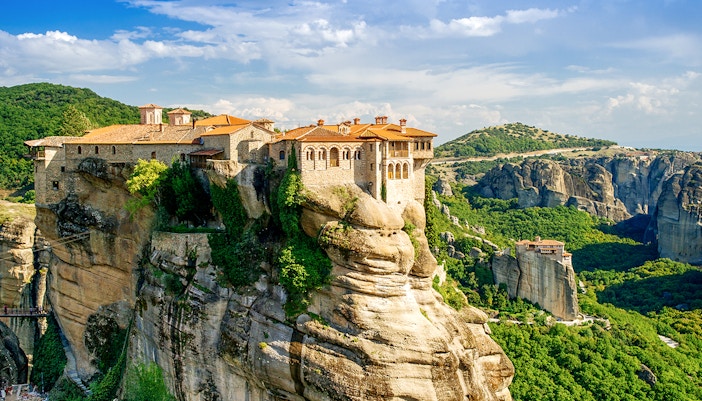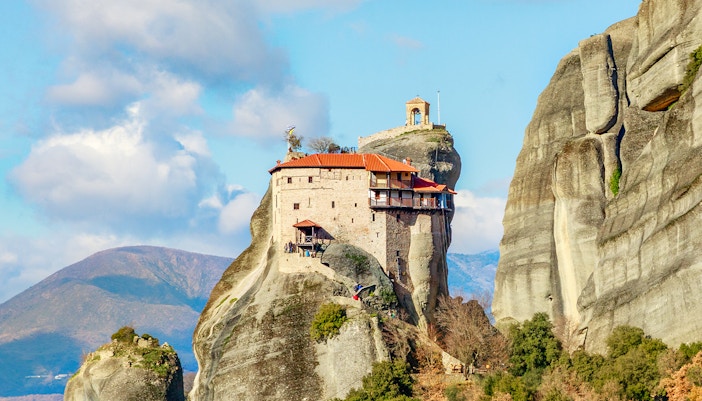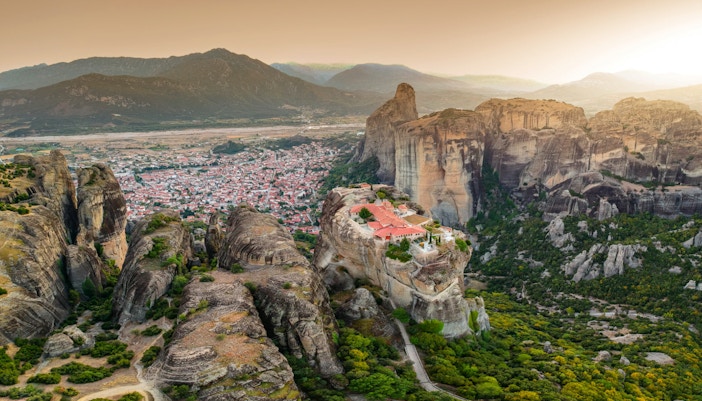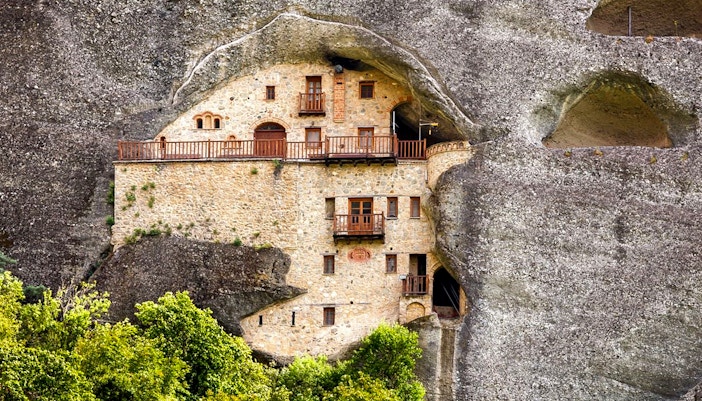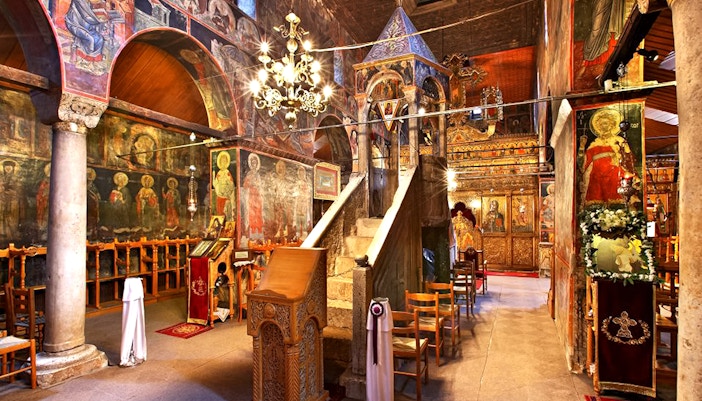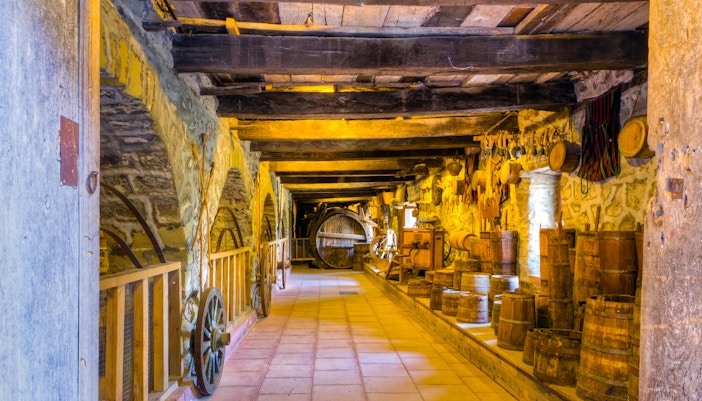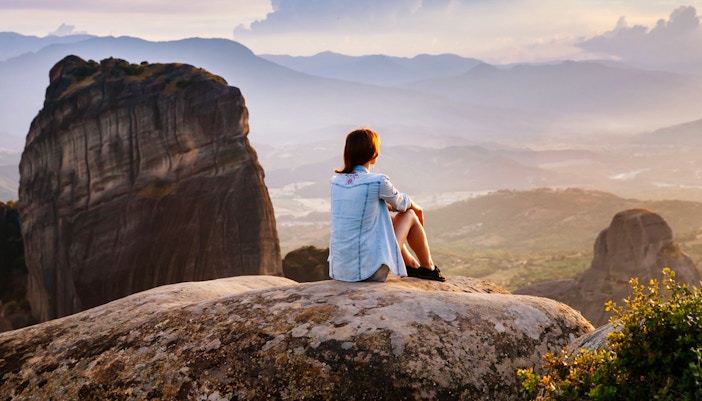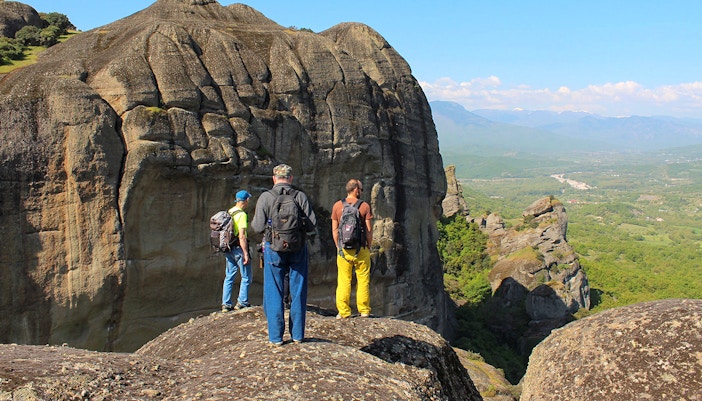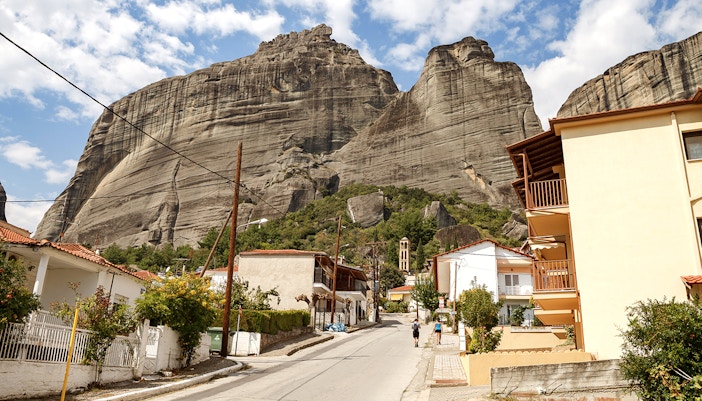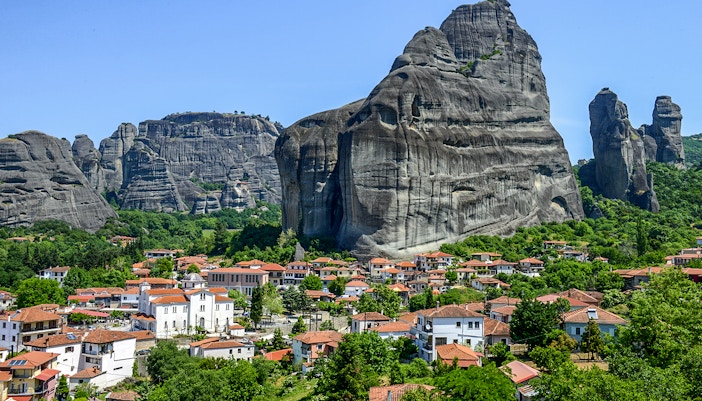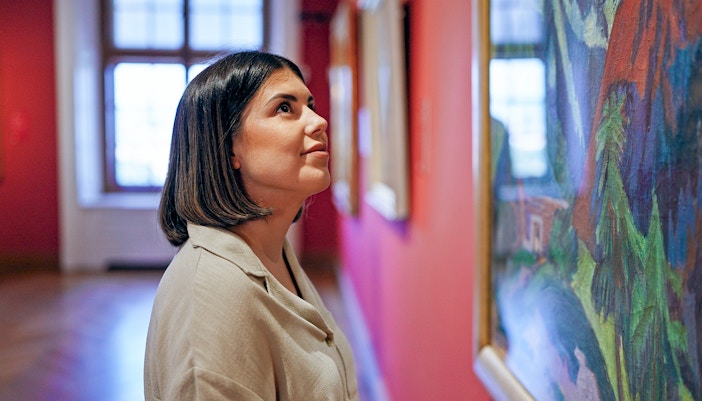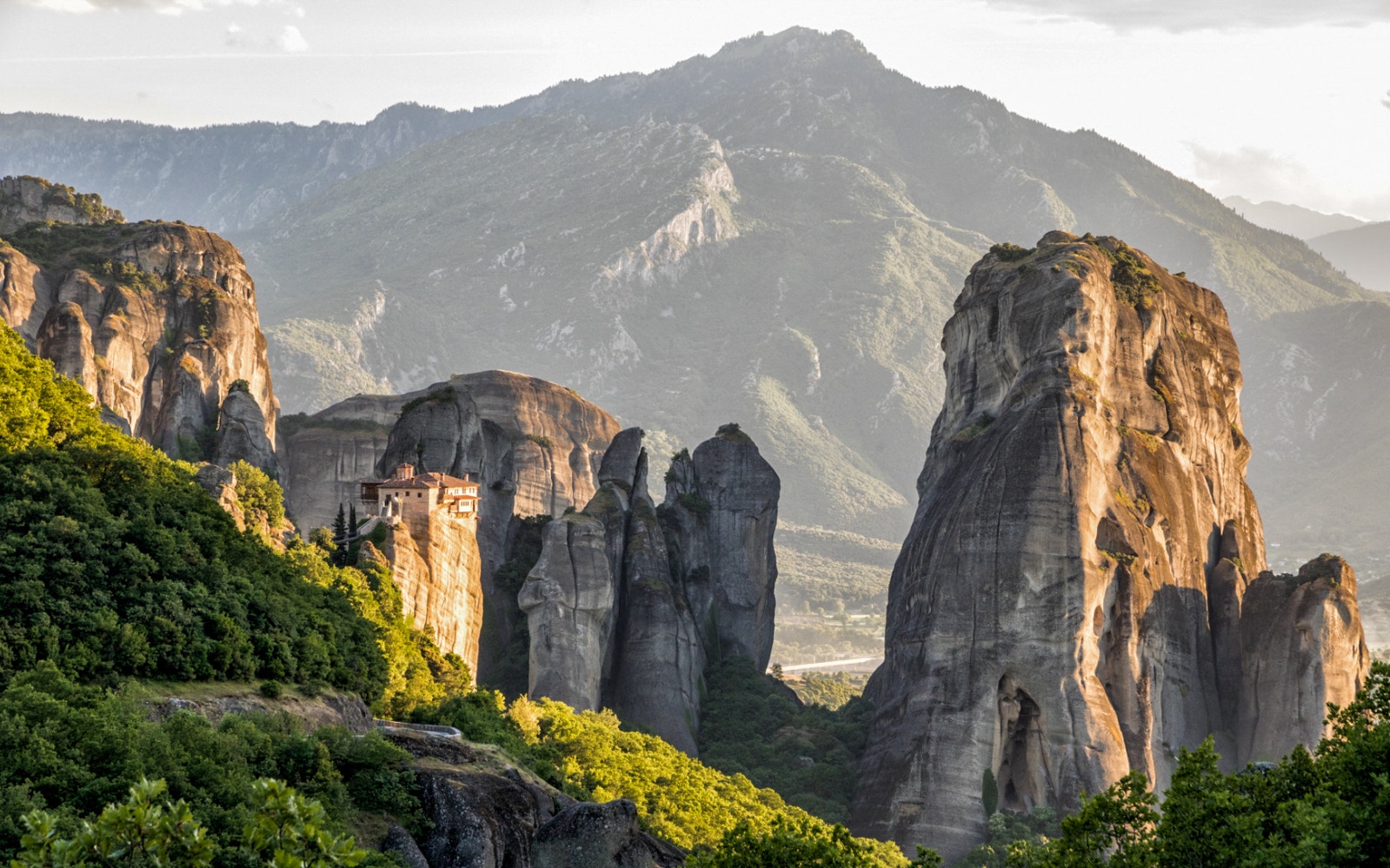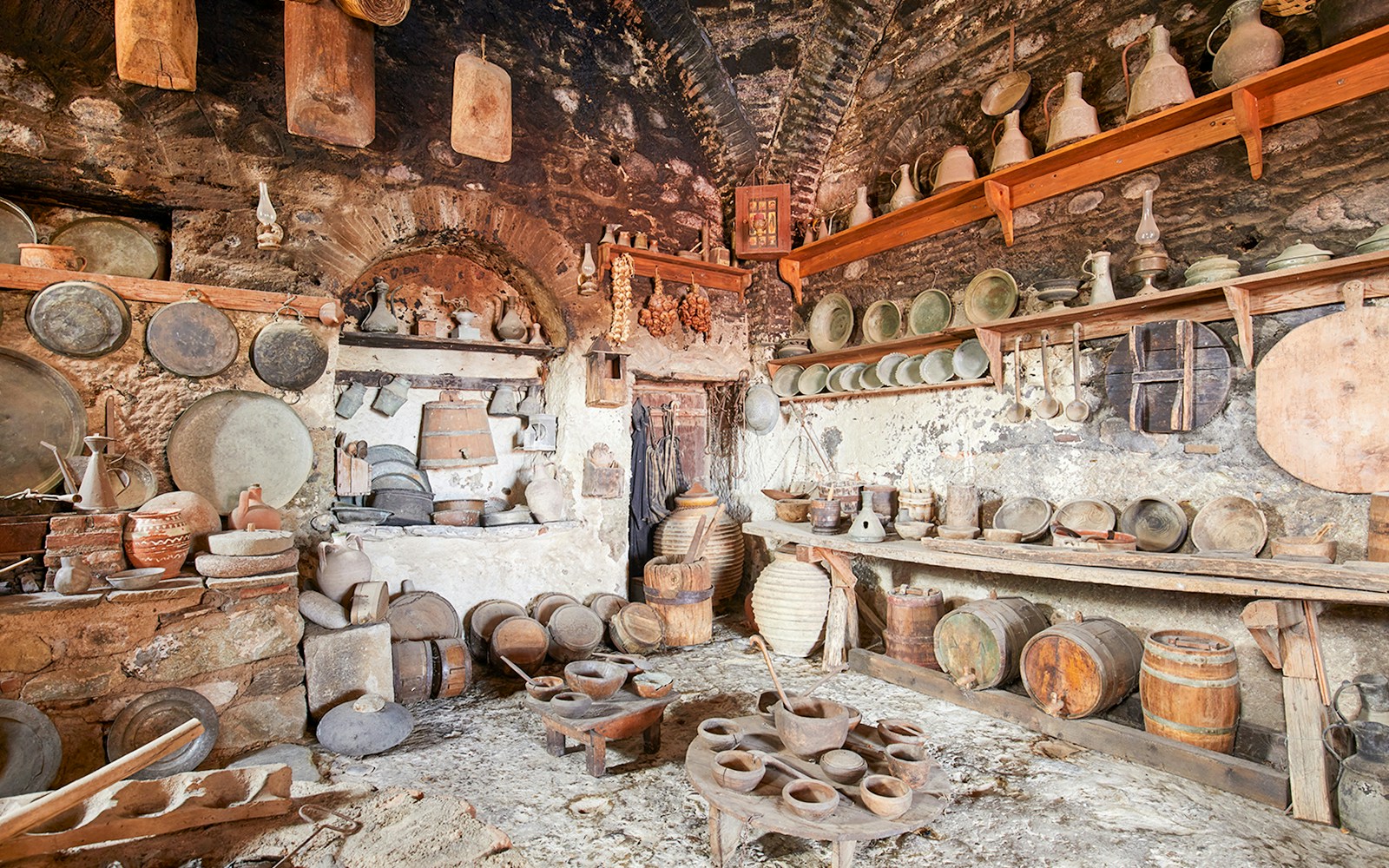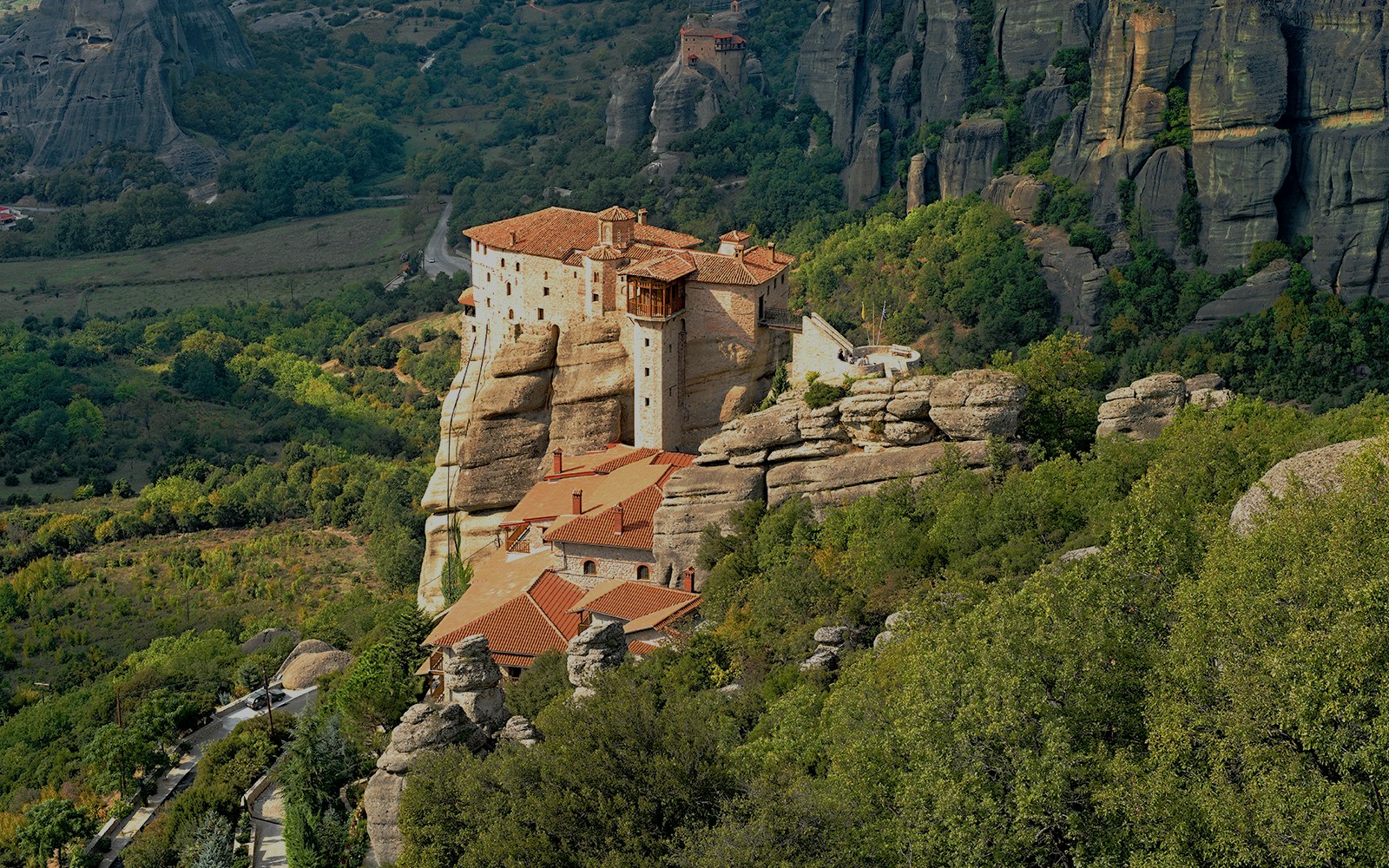- Each monastery tells a different story: Don’t stop at one. Each has its own view, relics, and rhythm.
- Perfect for every travel type: Whether you hike, drive, or join a tour, there’s a highlight waiting for you.
- Tied to living history: Apart from being a photo stop, it’s still home to monks, rituals, and faith.
- The light changes everything: Visit a spot at sunrise, then again at sunset. It’ll feel like a different place.
- Offbeat activities: From wine-tasting to spending downtime in the towns of Kalambaka and Kastraki, there's plenty to explore.
What makes Meteora unforgettable
You’ve likely seen the photos of monasteries perched on cliffs that seem to touch the sky. Apart from Meteora's dramatic views, it’s a place where hermits carved caves into rock, monks hauled supplies with rope lifts, and trails still wind between peaks and chapels.
Whether you come on a quick day trip from Athens or stay in Kastraki or Kalambaka, Meteora rewards you with more than scenery. Sunrise lookouts, centuries-old frescoes, and hearty Thessalian meals all add to the experience. Here’s how to make the most of your visit.
